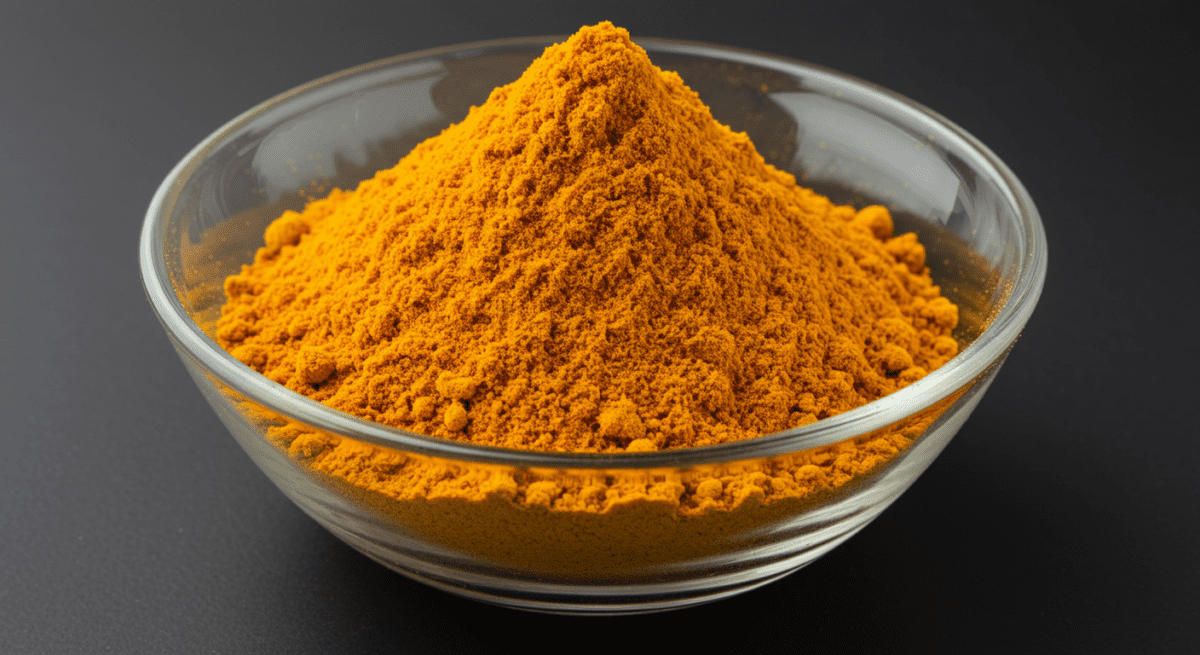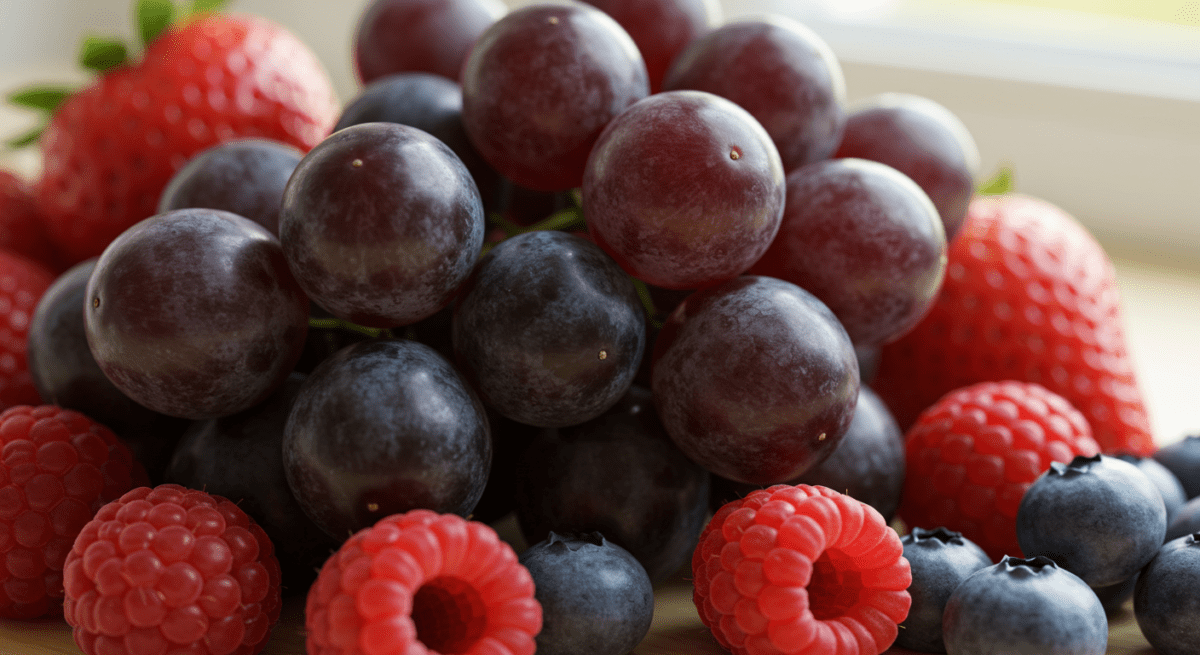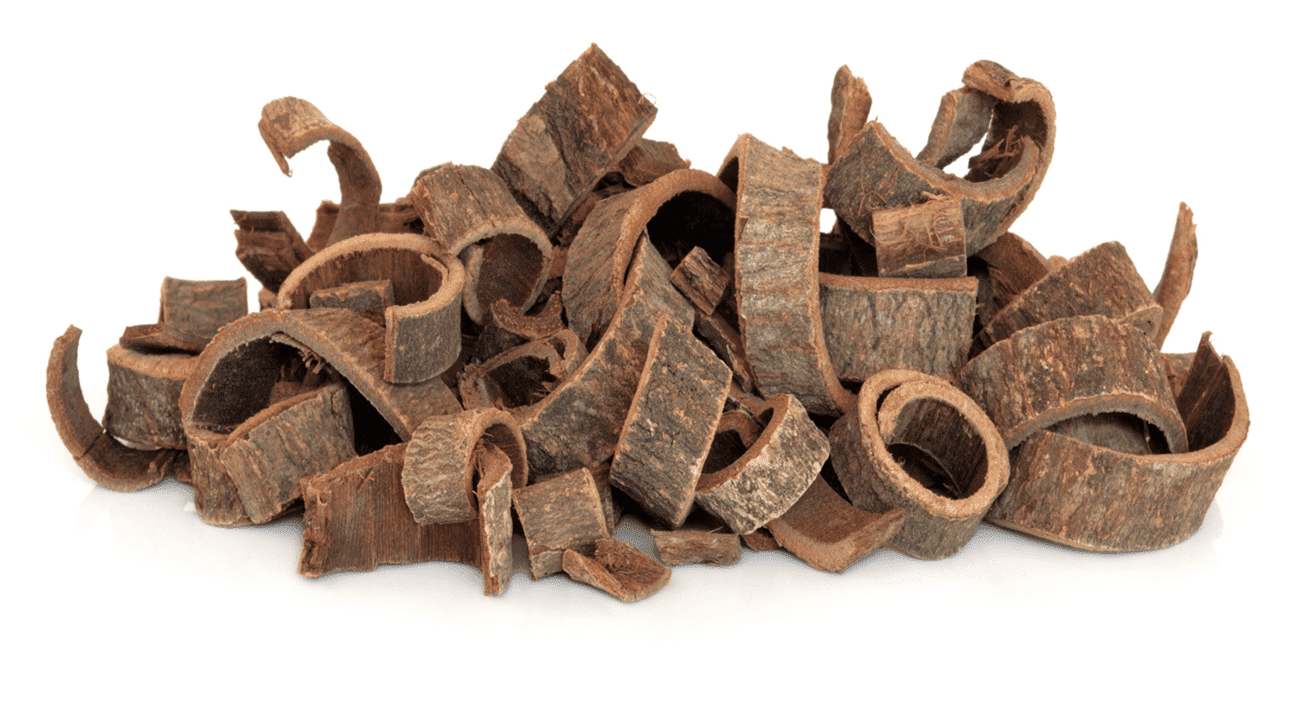Introduction: Our Turning Point
Since my cancer journey began, my wife Dr. Jean and I have been on a mission — not just to heal, but to truly understand what cancer is and how to fight it beyond conventional treatments. Early on, we found ourselves asking the same questions over and over:
- Why do some cancers come back even after chemo?
- Are there natural ways to prevent relapse?
- What can we eat or take that targets the real root of cancer?
The deeper we searched, the more we realized something important: there’s a hidden enemy inside tumors, one that makes cancer so persistent. That enemy is called the cancer stem cell (CSC)[1]. Understanding CSCs changed the way we viewed healing — both in my own fight with cancer, and in the guidance Jean gives her patients.
What Are Cancer Stem Cells?
Through late-night reading, journal notes, and many cups of tea, we learned that cancer stem cells are a small group of powerful cells hidden within a tumor. Unlike regular cancer cells, CSCs can:
- Self-renew (like normal stem cells, they keep making copies of themselves)
- Transform into different types of cancer cells
- Survive chemo and radiation treatments
- Regrow and spread the cancer later on
This discovery shook us. It explained why so many patients go into remission, only to face cancer again months or years later. You can kill the “branches” (regular cancer cells), but if the root (CSCs) survives, the cancer may grow back — sometimes even more aggressively.
Dr. Jean often tells her patients: “Healing is not just about shrinking a tumor. It’s about addressing the seeds of cancer that can grow again if left unchecked.”
A Brief History: Herbs as Medicine
Long before modern medicine, cultures across the world relied on herbs and food for healing. In Traditional Chinese Medicine (TCM), plants like magnolia bark and green tea were seen as balancing forces for the body. In Ayurveda, turmeric was called “the golden healer.” Even in the Bible, food and herbs were described as gifts from God for nourishment and healing.
Today, scientists are uncovering what our ancestors seemed to intuitively know: certain herbs contain compounds that may go straight to the root of disease. The challenge is that human clinical trials are expensive — and since plants can’t be patented like drugs, pharmaceutical companies rarely invest in them. That’s why much of the evidence we have comes from lab or animal studies, not large-scale human trials. Or as we like to say here in Malaysia: “no money mah”.
Our Personal Experience
For us, research is never just academic. When I (Irwin) was fighting cancer, we were always experimenting with what could support my recovery. Some days were tough, but Dr. Jean would remind me: “God gave us tools in nature — let’s use them.” Over time, we began integrating certain herbs and foods into my diet — not as replacements for treatment, but as powerful allies.
Today, in remission, I still take these herbs almost daily. Some we drink as teas, some we eat as sprouts or spices, and others we take in capsule form when it’s hard to prepare them. We’re not perfect — there are days we forget or life gets in the way. But consistency has become part of our lifestyle and faith practice.
5 Herbs and Natural Compounds That Target Cancer Stem Cells
Here are the five natural compounds that stood out to us — not just in the research, but in our own journey. For each one, we’ll share the science, history, and how we personally use it.
1. Curcumin (Turmeric)

What it does: Curcumin, the bright yellow compound in turmeric, has been shown to target CSCs in breast, colon, brain, and pancreatic cancers[3].
How it works: It interrupts key cancer pathways (like Wnt, Notch, Hedgehog), reduces inflammation, and promotes apoptosis (natural cell death).
History & culture: Used in Indian and Southeast Asian cooking for centuries, turmeric was always considered a cleansing, protective spice. In Ayurveda, it’s prescribed for everything from digestive health to wound healing.
Our use: We add turmeric powder to morning oats, soups, and teas — always with a pinch of black pepper, because it boosts absorption by up to 2000%. On days when cooking gets busy, we also take turmeric/curcumin capsules. This keeps our routine steady.
2. Sulforaphane (Broccoli Sprouts)

What it does: Sulforaphane, found abundantly in broccoli sprouts, reduces CSC activity in breast and prostate cancer models[4].
How it works: It boosts detoxification pathways, protects DNA, and makes it harder for CSCs to survive.
History & culture: Cruciferous vegetables (like broccoli, kale, cabbage) have long been dietary staples in many cultures. The Chinese often served stir-fried broccoli as a “cleansing dish,” while in the West, cabbage soup was a traditional remedy for illness.
Our use: We started growing broccoli sprouts at home in small jars. Within a week, we have fresh sprouts for salads and smoothies. They’re crunchy, peppery, and surprisingly delicious. Jean also recommends lightly steaming broccoli instead of boiling, to preserve sulforaphane content.
3. EGCG (Green Tea)

What it does: Epigallocatechin gallate (EGCG), the main compound in green tea, suppresses CSCs in colorectal, lung, and breast cancer models[5].
How it works: It slows CSC growth, reduces angiogenesis (blood supply to tumors), and encourages apoptosis.
History & culture: Green tea has been a cornerstone of Japanese and Chinese health practices for centuries. In Japan, tea ceremonies were not just social rituals but meditative practices of mindfulness and wellness.
Our use: We drink organic green tea daily. Some mornings, I prefer matcha for its stronger antioxidant boost — especially before writing or coaching. Jean enjoys jasmine green tea in the evenings. It’s become both medicine and ritual for us.
4. Resveratrol (Grapes & Berries)

What it does: Resveratrol, found in grape skins, blueberries, and raspberries, has been shown to eliminate CSCs in breast, colon, and prostate cancers[6].
How it works: It disrupts cancer survival pathways (like NF-κB and STAT3) and enhances the body’s healing capacity.
History & culture: In Mediterranean cultures, grapes and berries were treasured not just as food but as symbols of vitality. Hippocrates himself reportedly used grapes for detoxifying the body.
Our use: We eat red grapes with the skin, and add blueberries and raspberries to breakfast bowls or as afternoon snacks. We try to keep frozen berries stocked at home for convenience.
5. Honokiol (Magnolia Bark)

What it does: Honokiol, a compound from magnolia bark, directly acts on CSCs and reduces tumor formation[7].
How it works: It blocks the Notch and STAT3 pathways, both crucial for CSC survival.
History & culture: Magnolia bark has been used in Traditional Chinese Medicine for anxiety, digestion, and inflammation for over 2000 years. The Chinese called it “hou po”, believing it grounded the body and spirit.
Our use: We haven’t added honokiol yet, since it’s less common in Malaysia and requires supplements. But it’s on our radar, and we’re praying for the right timing and professional guidance before starting.
What Our Anti-CSC Diet Looks Like
After discovering how powerful cancer stem cells are, Dr. Jean and I knew we couldn’t leave our meals to chance anymore. Food had to become both our nourishment and our medicine. Over time, we designed what we call our Anti-CSC Diet — not a strict plan, but a lifestyle of choosing foods that give life and avoiding those that feed disease.
Foods We Eat More Of
Every ingredient we focus on has either strong anti-inflammatory properties, cancer-fighting compounds, or nutrients that specifically target CSCs. Here’s what fills our kitchen most days:
- Cruciferous vegetables: broccoli, kale, cauliflower, cabbage — rich in sulforaphane and indole-3-carbinol.
- Herbs and spices: turmeric, ginger, garlic, cinnamon, oregano.
- Colorful fruits: blueberries, raspberries, grapes with skin, pomegranate.
- Seeds and nuts: flaxseed, chia, walnuts, pumpkin seeds.
- Healthy fats: olive oil, avocado, coconut oil in moderation.
- Plant-based proteins: lentils, beans, tempeh, tofu.
- Fermented foods: kimchi, sauerkraut, miso — for gut health and immunity.
We try to make every plate look like a rainbow. The colors aren’t just pretty — they signal a variety of phytochemicals that the body uses for protection.
Foods We Try to Avoid
This part wasn’t easy. I (Irwin) grew up loving fried foods and sweet desserts, but once I realized these could fuel the very cells trying to kill me, it shifted my perspective. We now limit:
- Sugar and refined carbs: white bread, pastries, sweet drinks — they spike insulin and inflammation.
- Processed meats: sausages, hot dogs, bacon — linked to higher cancer risks.
- Fried and fast foods: loaded with trans fats and oxidized oils.
- Too much red meat: we still enjoy it occasionally, but plant protein dominates our meals.
- Alcohol: a known cancer risk factor, so we keep it minimal to none.
A Typical Day on Our Diet
To give you a clear picture, here’s how a normal day looks for us:
- Breakfast: Oats topped with blueberries, chia seeds, and a sprinkle of turmeric with black pepper.
- Lunch: Brown rice bowl with broccoli sprouts, sautéed kale, garlic tofu, and kimchi.
- Snack: A handful of walnuts and green tea (sometimes matcha).
- Dinner: Lentil soup with turmeric, cauliflower curry, and avocado salad.
- Evening wind-down: Herbal tea (ginger or chamomile) and quiet prayer.
This rhythm doesn’t feel like a diet anymore. It feels like living with intention. And when we slip up, we don’t beat ourselves up — we just get back on track the next day.
Risks and Precautions
We always remind people: herbs are powerful. Just because they’re natural doesn’t mean they’re automatically safe for everyone. Here are a few things we’ve learned along the way:
- Drug interactions: Turmeric and green tea can thin blood. Garlic can affect blood pressure. Always check before mixing herbs with prescribed meds.
- Digestive upset: Some herbs in high doses may cause nausea or diarrhea (we learned this the hard way when Irwin took too much turmeric at once!).
- Quality control: Not all supplements are created equal. Choose brands that are third-party tested and avoid fillers.
- Allergies: Start small when trying a new herb. Even natural foods can trigger reactions.
Dr. Jean often says: “Think of herbs like fire. In the right amount, they warm and heal. In the wrong amount, they can burn.”
Sourcing and Storage Tips
Over time, we figured out practical ways to make this lifestyle doable. Here are some tips that work for us:
- Buy organic when possible: Especially for thin-skinned fruits like berries and grapes.
- Grow your own: Broccoli sprouts are easy and cost-effective. Just a jar, some seeds, and a week of patience.
- Use capsules wisely: On busy days, we rely on curcumin capsules or green tea extract pills. Not perfect, but consistent.
- Freeze for convenience: Frozen berries and pre-chopped garlic save time without losing much nutrition.
- Store properly: Keep turmeric powder in airtight jars, olive oil in dark bottles, and nuts in the fridge to prevent oxidation.
And yes — we eat moringa in pill form almost every day. Unless life throws a curveball and we miss a dose, this has been one of our staples. It’s simple, affordable, and accessible here in Malaysia.
Lifestyle Integration: More Than Food
Healing for us is not just about what goes into our mouths. It’s also about what goes into our minds and hearts. Here’s how we integrate herbs and diet into a bigger lifestyle of wellness:
- Faith: Prayer before meals isn’t just tradition — it’s our way of dedicating food as medicine and asking God to bless our bodies.
- Movement: Gentle exercise, walking, and stretching keep the body strong enough to fight.
- Rest: Sleep is when the body repairs itself. We try to keep bedtime consistent, though Irwin sometimes sneaks into late-night writing!
- Community: Sharing meals with friends and family turns healthy food into a joyful event, not a chore.
When food, faith, and lifestyle connect, healing feels natural — not forced. That’s what sustains us long after hospital visits and treatments end.
FAQ
1. Can diet really prevent cancer recurrence?
While no diet guarantees full protection, research shows that plant-based, anti-inflammatory foods may reduce recurrence risks by supporting immunity and reducing CSC activity[9].
2. What if I can’t afford organic foods?
Do the best with what you have. Wash produce thoroughly, peel skins when possible, and prioritize organic for “dirty dozen” foods like berries and grapes.
3. How long before I see results?
Diet is not like a pill — it’s about long-term patterns. Benefits show up over months and years, not days. But energy, digestion, and mood often improve within weeks.
4. Is it okay to combine herbs with chemo or radiation?
Some are safe, some are not. Always ask your doctor. We used herbs alongside treatment, but carefully — adjusting dosages when needed. Integration, not replacement, is the key.
5. What’s the most important herb to start with?
If we had to pick one, we’d say turmeric — it’s affordable, easy to add to meals, and has strong evidence for anti-cancer pathways. But the real power is in combining several herbs regularly.
6. Does faith really matter in healing?
For us, absolutely. Faith reduces stress, lifts our spirit, and gives us strength to keep going. Science may not measure it, but we feel the difference every single day.
7. Can herbs alone cure cancer?
No. Herbs are not a replacement for medical treatment. But they may support healing, reduce side effects, and target the root cause of recurrence when combined with proper care[8]. Even in some extreme cases of patients who refused chemo completely and go the natural path, they do take herbs, but also with lifestyle and diet changes as well. So it’s not just one thing. It’s many things at once.
8. How often should I take these herbs?
Consistency matters more than perfection. For us, it’s daily — whether in food, tea, or capsules. Missing a day occasionally won’t undo the benefits, but long-term habits make the difference.
9. Are supplements as good as whole foods?
Whole foods offer synergy (fiber, vitamins, and compounds working together). Supplements can help when fresh sources aren’t available — like curcumin or honokiol capsules. We use a mix of both.
10. Do these herbs interact with medications?
Some may. For example, turmeric and green tea can affect blood thinners. Always check with a professional before starting any new herb, especially during treatment.
Final Thoughts: Renewal, Not Just Recovery
Looking back, cancer taught us more about life than about death. It taught us that healing is not just surviving — it’s renewal. Every plate of food, every herb capsule, every prayer before a meal is part of our commitment to stay alive and thrive together.
We’re not here to promise that herbs and diet will cure cancer. But we believe God gave us natural tools to fight — and when combined with wisdom, medical care, and faith, they form a shield of hope.
If you’re reading this while in the middle of your own battle, know this: you are not alone. Healing is possible. Renewal is real. And every small choice — even something as simple as a cup of green tea — can be part of your victory story.
References
- [1] Reya, T., Morrison, S. J., Clarke, M. F., & Weissman, I. L. (2001). Cancer Stem Cells: An Evolving Concept. Nature Reviews Cancer.
- [2] Prasad, S., Tyagi, A. K., & Aggarwal, B. B. (2017). Targeting Cancer Stem Cells with Natural Products. Anticancer Research.
- [3] Kakarala, M., Brenner, D. E., Korkaya, H., Cheng, C., Tazi, K., Ginestier, C., et al. (2009). Curcumin and Cancer Stem Cells. Cancer Research.
- [4] Li, Y., Zhang, T., Korkaya, H., Liu, S., Lee, H. F., Newman, B., et al. (2010). Sulforaphane and Breast Cancer Stem Cells. Clinical Cancer Research.
- [5] Shankar, S., Ganapathy, S., & Srivastava, R. K. (2007). Green Tea Polyphenols Against Cancer Stem Cells. Molecular Nutrition & Food Research.
- [6] Carter, L. G., D’Orazio, J. A., & Pearson, K. J. (2014). Resveratrol in Cancer Prevention and Therapy. Nutrients.
- [7] Arora, S., Bhardwaj, A., Srivastava, S. K., Singh, S., McClellan, S., Nirodi, C. S., et al. (2012). Honokiol as an Anti-Cancer Agent. Cancer Letters.
- [8] National Cancer Institute. (2023). Complementary & Alternative Medicine.
- [9] Stanisavljević, D., Dinić, S., & Mihailović, M. (2022). Diet and Cancer Stem Cells: A Link Worth Exploring. Frontiers in Nutrition.

